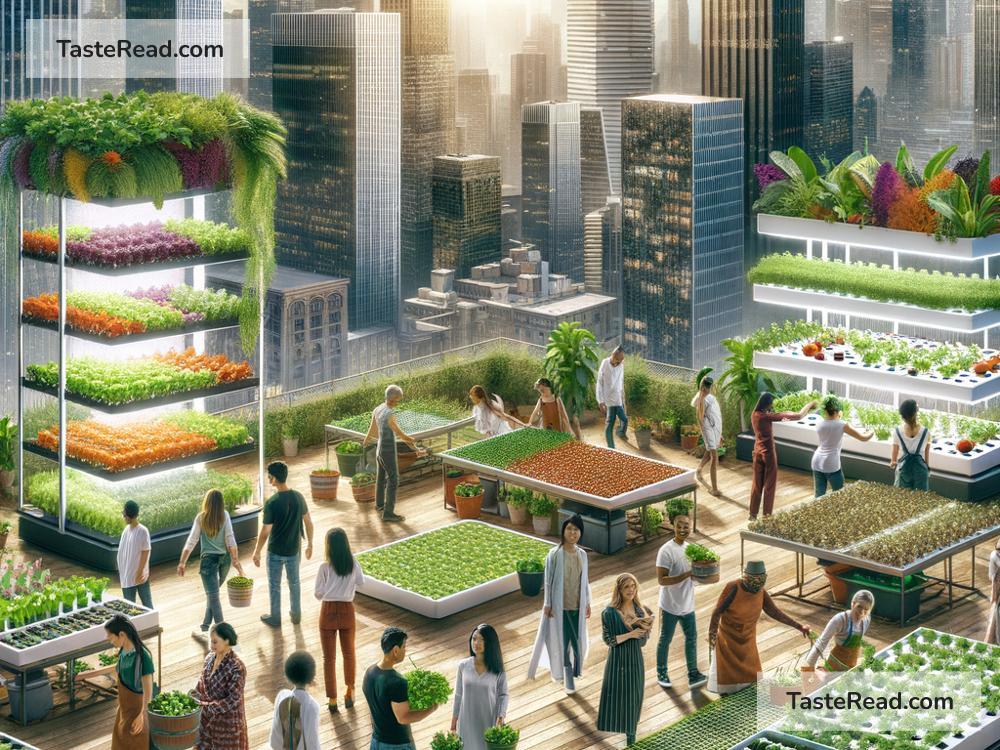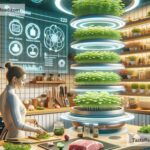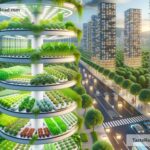The Future of Food and Urban Ecosystems: A Greener Tomorrow
As the world becomes more urbanized, cities are facing big challenges. One of the biggest questions is: how can we feed everyone in a sustainable way while protecting the environment? The future of food and urban ecosystems is closely linked, and both need creative solutions to thrive. Here’s what we might expect in the coming years—and how these changes could transform our cities into greener, healthier places.
A Growing Need for Change
The way food is produced today often harms the planet. Traditional farming uses large amounts of water, energy, and chemicals like pesticides. It also requires transporting food over long distances, which contributes to pollution and climate change. At the same time, city populations are growing rapidly, putting strain on local ecosystems and food supply chains. By 2050, nearly 70% of the world’s population is expected to live in urban areas, which means we need smarter ways to grow and distribute food.
Urban Farming: Growing Food Locally
One exciting solution is urban farming, which involves growing food in cities instead of faraway rural areas. You might picture rooftop gardens, vertical farms, or even crops growing inside old warehouses. These techniques use less space, water, and resources while producing healthy, fresh food. Urban farming also reduces the need to ship food long distances, cutting down on air pollution and carbon emissions.
Vertical farming is especially promising. It stacks rows of plants in layers, using LED lights and hydroponic systems to help them grow. Since vertical farms are indoors, they aren’t affected by bad weather or pests, making them reliable year-round. Companies are already building vertical farms in cities around the world, from Singapore to New York City, and it’s likely they’ll become more common in the future.
Technology in Food Production
Technology will play a big role in the future of food. Farmers are already using drones, robots, and artificial intelligence (AI) to monitor crops, increase efficiency, and reduce waste. For example, sensors can check soil moisture levels and tell farmers exactly when and where to water their crops. AI can predict weather patterns, helping farmers plan ahead and avoid losing their harvests to drought or floods.
Food innovation is moving into cities, too. Scientists are developing lab-grown meat, which is made from animal cells without raising and slaughtering livestock. This method uses fewer resources and produces less greenhouse gas compared to traditional meat production. Some people are also experimenting with insect-based protein, which is highly nutritious and easier to farm than cows or chickens. Though these foods might sound strange now, they could become a regular part of our diets in the future.
Greener Cities and Biodiverse Spaces
Urban ecosystems are not just about food—they involve all plant and animal life in cities. As cities expand, building green spaces and protecting biodiversity will become more important. Trees, parks, and gardens don’t just make cities prettier; they provide cleaner air, absorb carbon dioxide, and reduce heat during hot weather. These green spaces also offer habitats for birds, bees, and other wildlife.
Some cities are already leading the way. Singapore, for example, has built “vertical forests” on skyscrapers, where plants grow up the sides of buildings. Milan, Italy, has similar structures that look like green towers. These projects turn cities into more eco-friendly environments by blending modern architecture with nature.
Green roofs and walls are also becoming popular. They are covered with plants that filter pollution, produce oxygen, and even grow food. In the future, buildings might have living walls filled with vegetables, herbs, or fruit, giving residents a direct connection to their food source.
Supporting Sustainable Choices
Sustainability will depend on individual choices as well as large-scale systems. Governments and companies will need to support eco-friendly policies, such as reducing food waste, switching to renewable energy in food production, and encouraging urban farming. At the same time, people will need to try new foods, like plant-based and lab-grown alternatives, and be mindful about how much they waste.
Education is key. Schools can teach kids about growing food, cooking healthy meals, and protecting the environment. Community gardens can bring neighbors together while showing them how to grow their own food. These small steps can lead to big changes over time.
A Healthier Future for Everyone
The future of food and urban ecosystems is full of possibilities, but it will take teamwork to make those possibilities a reality. Cities have the chance to be more self-sufficient, producing food locally and improving the health of residents. Urban ecosystems can be designed to work with nature rather than against it, leading to cleaner air, less pollution, and happier communities.
As we look ahead, it’s clear that change is needed—but it’s also clear that change is possible. With new technology, smarter food systems, and a commitment to sustainability, cities can grow in a way that feeds everyone while nurturing the planet. The future doesn’t have to choose between urban growth and nature; instead, it can embrace both, creating balanced and thriving ecosystems where people and the environment can coexist.
The journey to a greener tomorrow starts today—so let’s plant the seeds for a better future!


